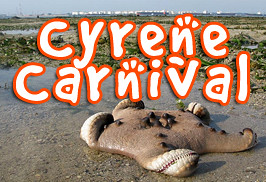It has hit the news of late that algal bloom over the Straits of Johor have deeply impacted the fish farms clustered in the straits off Pasir Ris, Changi and Pulau Ubin. A reporter from TODAY contacted me yesterday asking for comments on the impacts of fish farms and some possible solutions to allay these possible environmental impacts. This was probably after reading my blog post on Pulau Ubin Stories on Red Tide affecting Pulau Ubin. Interestingly, in September 2009, I also commented about the need to manage our aquaculture farms carefully in a Straits Times article about vanishing Kelongs in Singapore.
Knowing the limitations of a news article, I decided to share my long reply on this blog with all my readers as well. I must confess that I am no expert in aquaculture or marine systems, but here are my two cents worth based on some research I did doing my blog post as well as projects done on aquaculture in university.
Fish farms, if done sustainably, are important for supplementing our seafood supply and prevent overfishing. However, fish farms if not managed well, could result in major environmental pollution and further harm the wild population of fish in our seas. The sea is not an enclosed farm with concrete walls and any food, antibiotics fed to the fish, as well as the fish waste would eventually dispersed into the sea.
Also the household waste and sewage of the farm also needs to be managed properly. In a deep sea system with good water circulation, perhaps the concentration of nutrients and chemicals would be naturally diluted by the ocean currents. However, in the straits of johor, there is very poor circulation of water due to the causeway blocking circulations. Furthermore, locating large number of fish farms in clusters with poor circulation is potentially problematic as the sea is unable to naturally dilute the nutrients.
When nutrient level is very high, massive algal bloom will occur which may deplete oxygen supply in the waters. This not only kills the fish in the farms but all wild fish population. If the species of algae blooming contains toxin, then when humans consume the seafood affected by this algal bloom, they too will become sick.
For fish farms located near river mouths like those at Changi and Pasir Ris, they are affected by the monsoon flood discharges from both Singapore and Malaysia. The freshwater will float above the salt water and prevent oxygen from circulating and resulting in fish death as well. But these flood discharges may also carry with them more nutrients from agriculture or sewage discharges from the land into the sea. Combined with existing nutrients from fish farm, these could easily exacerbate the problem.
For solutions, we can do several things:
1) Understand well the geographical environment and ecological system of our waters before we locate our fish farms. For example, the fish farms off Semakau were not affected by the mass death because they are not near the coast or river mouths,and they have good circulation. Make sure that fish farms are not located too near existing coral reefs as well to minimise impact to our wild fish population. Changi, Ubin and Pasir Ris are all very near existing reefs such as Chek Jawa, Changi and Pasir Ris. Monsoon flood discharges will happen every year so perhaps locating far from river mouths and coastal areas will be helpful.
2) Do not cluster too many fish farms together in close vicinity to one another. This reduces the environment's natural ability to dilute pollutants and nutrients in the water. Overcrowding is a known problem in aquaculture. Both overcrowding of fish in each cell of a farm, and in this case, overcrowding of farms in one area with poor water circulation. [On hindsight: It's important to have scientific studies done on the treshold and carrying capacity of our waters and the number of fish farms it can support without resulting in future calamities]
3) Strong regulation and monitoring of fish farm practices are most critical. The amount of antibiotics and fish feed given, how the farms deal with fish waste, as well as, the sewage and household waste from the farm should be strongly regulated and monitored. Farmers should also be educated on proper practices. Good practitioners should be rewarded and best practises shared.
4) Consumers can also play a part in encouraging good practises if fish farms can be awarded sustainability labels for good practises by the government. These sustainable fish farms should be rewarded by consumers by buying only these sustainably-reared fish, identified by these labels. Most of the time, the problem in Singapore lies with ambivalent conusmers who do not question where their fish comes from. Also, there is a lack of information in our markets and supermarkets where there are no labels indicating origin of fish or how they are reared, especially those from local fish farms.
Please feel free to share your ideas and comments. Have you spot any factual errors? Please let me know!
Related Reads:
Marine Aquaculture, David Suzuki Foundation
Tuesday, January 05, 2010
Impacts of Marine Aquaculture & Possible Solutions
Posted by
Monkey
at
Tuesday, January 05, 2010
![]()
Labels: Environment, Food Issues, Nature, southernshores, ubin

 I can be contacted at
I can be contacted at 







No comments:
Post a Comment